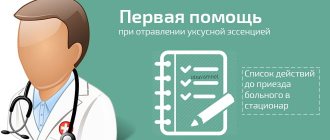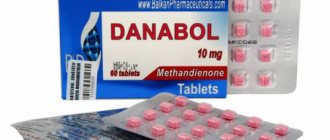The risk of poisoning due to inhalation of various combustion products awaits a person not only during fires. Intoxication is also possible in other cases. Burning grass or spending long periods of time near a fire can also lead to big problems and sometimes even quick death.
Combustion products are gaseous, solid or liquid toxic substances formed as a result of combustion. Their composition depends on what exactly was burning and the conditions under which this process took place.
When burned, inorganic and organic substances form CO, SO2, CO2, P2O5, etc.
During incomplete combustion, alcohols, acetones, sulfur gas, carbon monoxide, etc. are released into the air. As a result, the air is filled with caustic, poisonous smoke, consisting of tiny solid particles of the combustible substance.
According to ICD 10 (international classification of diseases), such poisonings correspond to code T 59.
What is it and where is it used
Acetic acid is an aggressive substance with the formula CH3COOH. Vinegar is an aqueous solution of this very acid (6-9%). Acetic essence is also a solution, but with a higher acid concentration (70-80%).
Acetic acid is a colorless liquid but has a distinct odor. It is a flammable substance. It is obtained by the oxidation of acetaldehyde, and if it is necessary to obtain food vinegar, then acetic fermentation of ethanol is used.
Acetic acid is used in the manufacture of a number of medicines, and is also actively used in the kitchen, making it possible to prepare marinades, canned food, and seasonings. Some insecticides are also made from it. It is involved in a number of metabolic processes occurring in a healthy body.
Vinegar calculator.
Information
Sources and literature
- Minutes of meetings of the Expert Council of the RCHR of the Ministry of Health of the Republic of Kazakhstan, 2015 List of used literature: 1) I, V.
 Markova, V.V. Afanasyev, E.K. Tsybulkin “Clinical toxicology of children and adolescents” 1999. 2) E.A. Luzhnikov, L.G. Kostomarov “Clinical toxicology” 2000. 3) Gheorghe Mogos “Acute poisonings”, 1984. 4) E.A. Luzhnikov, Yu.N. Ostapenko, G.N. Sukhodulova “Emergency conditions in acute poisoning”, 2001. 5) G.N. Uzhegov “Acute poisonings”, 2001. 6) .B.D. Kamarov, E.L. Luzhnikov, I.I. Shimanko “Surgical methods of treating acute poisoning”, 2001. 7) L.A. Tiunov, V.V. Kustov “Toxicology of carbon monoxide”, 1969. A.A. Ludevig "Acute poisoning", 1986. 9) E.A. Luzhnikov “Emergency treatment of acute poisoning and enotoxicosis”, 2001. 10) I.B. Soldatov, V.A. Danilin, Yu.V. Mitich “Occupational pathology of the upper respiratory tract in the chemical industry” 11) A.I. Burnazyan, A.K. Guskova “Mass radioactive damage” 12) G.G. Zhamgotsev, M.V. Predtechensky “Medical care for those affected by SDYAV”, 1993. 13) K. Kasenov “Snake venoms and the reactivity of the body”, 1977. 14) V.V. Sokolovsky “Histochemical studies in toxicology” 15) M.V. Korablev “Dithiocarboxylic acid derivatives”, 1971. 16) L.I. Medved “Hygiene and toxicology of new pesticides and poisoning clinic” 17) M.D. Mashkovsky “Medicines”, 1984. 18) A.L. Kostyuchenko “Efferent therapy”, 2001. 19) Baizoldanov, Sh.T. Baizoldanova “Guide to the toxicological chemistry of toxic substances isolated by extraction,” 2003. 20) E.A. Luzhnikov “Emergency treatment of acute poisoning and endotoxicosis”, 2001. 21) A.I. Martynov “Intensive care”, 1998. 22) J. Henry, H. Wideman “Prevention and treatment of poisoning,” 1998. 23) Matthew J. Ellenhorn, Donald G. Barceloux “Medical toxicology. Diagnosis and Teatment of human poisoning", 1988 24) Lewis R. Goldfrank "Goldfrank's toxicological emergencies", 1994. 25) Journal of Toxicology, Clinical Toxicology, Volumt 38-41, 2003 26) Thompson L, Evaluation of regional and non -regional poison centres. New England Journal of Medicine 1983;308:191-194. 27). Litovitz T et al, Poison information providers: an assessment of proficiency. American Journal of Emergency Medicine 1984;2:129-135. 28). Litovitz T, Elshami JE, Poison center operations: the necessity of follow-up. Annals of Emergency Medicine 1982; 11:348-352. 29) Sullivan JB, Proper use of the toxicology laboratory. Emergency Medicine Reports 1984; 5:125-132. 30) Kellerman Al et al. Impact of drug screening in suspected overdose. Annals of
Markova, V.V. Afanasyev, E.K. Tsybulkin “Clinical toxicology of children and adolescents” 1999. 2) E.A. Luzhnikov, L.G. Kostomarov “Clinical toxicology” 2000. 3) Gheorghe Mogos “Acute poisonings”, 1984. 4) E.A. Luzhnikov, Yu.N. Ostapenko, G.N. Sukhodulova “Emergency conditions in acute poisoning”, 2001. 5) G.N. Uzhegov “Acute poisonings”, 2001. 6) .B.D. Kamarov, E.L. Luzhnikov, I.I. Shimanko “Surgical methods of treating acute poisoning”, 2001. 7) L.A. Tiunov, V.V. Kustov “Toxicology of carbon monoxide”, 1969. A.A. Ludevig "Acute poisoning", 1986. 9) E.A. Luzhnikov “Emergency treatment of acute poisoning and enotoxicosis”, 2001. 10) I.B. Soldatov, V.A. Danilin, Yu.V. Mitich “Occupational pathology of the upper respiratory tract in the chemical industry” 11) A.I. Burnazyan, A.K. Guskova “Mass radioactive damage” 12) G.G. Zhamgotsev, M.V. Predtechensky “Medical care for those affected by SDYAV”, 1993. 13) K. Kasenov “Snake venoms and the reactivity of the body”, 1977. 14) V.V. Sokolovsky “Histochemical studies in toxicology” 15) M.V. Korablev “Dithiocarboxylic acid derivatives”, 1971. 16) L.I. Medved “Hygiene and toxicology of new pesticides and poisoning clinic” 17) M.D. Mashkovsky “Medicines”, 1984. 18) A.L. Kostyuchenko “Efferent therapy”, 2001. 19) Baizoldanov, Sh.T. Baizoldanova “Guide to the toxicological chemistry of toxic substances isolated by extraction,” 2003. 20) E.A. Luzhnikov “Emergency treatment of acute poisoning and endotoxicosis”, 2001. 21) A.I. Martynov “Intensive care”, 1998. 22) J. Henry, H. Wideman “Prevention and treatment of poisoning,” 1998. 23) Matthew J. Ellenhorn, Donald G. Barceloux “Medical toxicology. Diagnosis and Teatment of human poisoning", 1988 24) Lewis R. Goldfrank "Goldfrank's toxicological emergencies", 1994. 25) Journal of Toxicology, Clinical Toxicology, Volumt 38-41, 2003 26) Thompson L, Evaluation of regional and non -regional poison centres. New England Journal of Medicine 1983;308:191-194. 27). Litovitz T et al, Poison information providers: an assessment of proficiency. American Journal of Emergency Medicine 1984;2:129-135. 28). Litovitz T, Elshami JE, Poison center operations: the necessity of follow-up. Annals of Emergency Medicine 1982; 11:348-352. 29) Sullivan JB, Proper use of the toxicology laboratory. Emergency Medicine Reports 1984; 5:125-132. 30) Kellerman Al et al. Impact of drug screening in suspected overdose. Annals of
Information
List of protocol developers with qualification information:
1) Orazbaev Murat Bekaidarovich MD MBA JSC “National Scientific Center of Oncology and Transplantology” of Astana, chief freelance toxicologist of the Ministry of Health of the Republic of Kazakhstan. 2) Gulmira Maratovna Toibaeva JSC “Kazakh Medical University of Continuing Education”, head of the clinical toxicology course. 3) Shakirov Talgat Dauthanovich JSC “Kazakh Medical University of Continuing Education”, clinical toxicology course assistant. 4) Gurtskaya Gulnara Marsovna – Candidate of Medical Sciences, Associate Professor of the Department of General Pharmacology of Astana Medical University JSC, clinical pharmacologist.
Disclosure of no conflict of interest: no
Reviewers: Tuleutaev Tleutay Baysarinovich – Candidate of Medical Sciences, Professor, Associate Professor of the Department of Internship in Surgery at the State Medical University, Semey
Indication of the conditions for reviewing the protocol: Review of the protocol 3 years after its publication and from the date of its entry into force or in the presence of new methods with a level of evidence.
Annex 1
Mandatory questions when interviewing the patient, relatives and witnesses of poisoning: 1. what poison are we talking about? (household, industrial poisons, etc.) 2. how much poison was taken? (number of tablets, volume of liquid drunk, how many sips taken) 3. when did the poisoning occur? (find out the time of exposure) 4. the circumstances that led to the poisoning (suicide, accidental, criminal, domestic, industrial poisoning) 5. what therapeutic measures have already been taken, what and how was the stomach washed? 6. life history: is there any pregnancy, mental illness, concomitant diseases It is always necessary (if possible) to take with you a package of the substance that caused the poisoning.
source
How can you get poisoned?
Vinegar poisoning can be either special or accidental. A drunkard who mixed up the bottles will not even pay attention to the smell of vinegar, taking a sip and getting burned, and a suicide will simply ignore the smell in order to achieve his goal.
Apple cider vinegar intoxication is often reported in children. This is explained by the fact that the color of the liquid resembles lemonade or apple juice, and if the baby does not yet know how to read, he can easily grab the bottle and take a fatal sip.
In production, if workers ignore basic safety rules, poisoning with acetic acid vapors occurs.
Many people believe that wine vinegar is healthier than regular vinegar or apple cider vinegar, but this is not true. If the instructions for use are not followed, intoxication is also possible through contact with wine vinegar.
Precautionary measures
To protect the lives of yourself and your loved ones, you should use household gas carefully and follow the rules:
- The concentration of gas in the air in a home or other enclosed space is recognized by a specific smell. It is strictly prohibited to use electrical appliances until they have completely weathered!
- Each gas appliance must be periodically monitored.
- If problems are detected or suspected, call a repair team.
- The premises are provided with ventilation and airing.
- It is prohibited to use gas stoves intended for cooking for heating purposes.
- As soon as manipulations with gas are completed, it is necessary to carefully tighten the supply valves.
- Avoid children near gas appliances.
- Monitor the moment of cooking to ensure that gas burners are flooded with liquid. Ensure dryness.
Carbon monoxide (CO)
- an odorless, colorless and tasteless gas, formed during incomplete combustion of carbon-containing compounds (for example, wood). The main sources of CO: heating devices (fireplaces, stoves) in rooms with insufficient ventilation and exhaust gas systems in cars. Frequency. It is observed frequently (according to some sources, it is in 4th place after poisoning with alcohol and its surrogates, various drugs, and drugs). In the United States there are approximately 3,800 deaths per year.
Code according to the international classification of diseases ICD-10:
Symptoms
Lethal poisoning with vinegar essence occurs when consuming the product in a volume of 30-50 ml. Due to the lower concentration, the lethal dose of table vinegar increases to 200 ml.
The main local signs of poisoning are pain at the site of contact of the liquid with the mucous membranes, their hyperemia (redness), severe salivation and a burning sensation.
Common symptoms of vinegar poisoning are:
- the blood becomes thick, it is difficult to pass through the vessels, the secretion of fluid decreases or stops, anuria occurs;
- hemolysis (gluing) of red blood cells occurs, which is dangerous due to thrombosis;
- hemoglobinuria develops;
- signs of acute renal failure appear;
- when using vinegar essence, liver damage is detected;
- with large areas of burn, toxic burn shock is detected.
These symptoms of vinegar poisoning develop gradually and pose a greater danger than a burn to the mucous membranes.
Pathogenesis
When inhaled, carbon monoxide enters the respiratory system, where it diffuses into the blood. The gas has a high affinity for hemoglobin, myoglobin and iron-containing enzymes of the human body. It easily reacts with hemoglobin, forming carboxyhemoglobin, which is unable to transport oxygen to tissues. Hypoxia develops. Slowing down the dissociation of the oxygen compound with hemoglobin in the presence of carboxyhemoglobin aggravates oxygen starvation of all organs and tissues. At the same time, biochemical processes occurring with the participation of iron-containing enzymes are disrupted. Under-oxidized metabolic products accumulate, which have an additional toxic effect on the central nervous system and other organs.
During a pathological examination, attention is drawn to the bright red color of the skin, mucous membranes, and internal organs. There are signs of edema of the brain and lungs. Congestive plethora of internal organs is revealed. Pinpoint hemorrhages, areas of degeneration and necrosis are found in the heart, lungs, and brain.
Possible complications
Poisoning with vinegar essence and other vinegar products is dangerous, primarily due to the development of vascular hemolysis of red blood cells. With hemolysis, the likelihood of thrombosis increases and kidney function is disrupted. Symptoms indicating damage to the excretory system are the release of a small amount of dark urine after contact with vinegar, followed by a complete cessation of kidney discharge.
Hemoglobin found in the blood plasma is not excreted by the kidneys and is oxidized to bilirubin. The color of the skin and mucous membranes of patients becomes yellow, and toxic bilirubin aggravates the course of poisoning.
Kidney damage is reversible, but death most often occurs due to it.
In addition to renal failure, the following complications can cause death:
- severe blood loss as a result of vessel trauma;
- pain shock;
- dehydration due to burns;
- change in structure or complete destruction of red blood cells in the vascular bed;
- liver dystrophy.
Why are they poisoned by smoke?
Combustion products are gaseous, solid or liquid chemicals released during the process. The composition depends entirely on the item being burned. The most frequently formed harmful compounds are CO, SO2, CO2, P2O5. The atmosphere is literally saturated with vapors of acetone, alcohol, and carbon monoxide.
The most toxic are carbon monoxide and cyanide:
- The first interferes with the production of hemoglobin and the transport of O2.
- The second disrupts metabolism and does not allow oxygen to penetrate the tissues.
Poisoning is possible when exposed to any substances released during combustion. However, extinguishing a fire is sometimes no less dangerous.
Common causes of intoxication:
- Some gases react with water, releasing toxic substances, such as nitric or sulfuric acid, ammonia. As a result, the mucous membranes of the lungs and bronchial tree are burned.
- Few people know, but sometimes extinguishing a fire with professional means provokes poisoning. Using a fire extinguisher when there is a fire in plastic, plastic, or rubber can lead to the formation of phosgene, which causes swelling of the respiratory system.
- It is easy to get poisoned by carbon monoxide when visiting a bathhouse, or from household poisoning when the stove pipeline is worn out.
- Damage is possible when the vehicle warms up. Oil distillation products, gasoline and diesel fuel, quickly saturate the air in a closed garage. In this case, the person falls asleep and cannot resist intoxication.
- The hidden threat is tobacco smoke. It doesn’t matter whether you develop an addiction to cigarettes or aesthetic hookah smoking, the lungs are equally affected.
Often the cause of intoxication with combustion products is going out into nature.
Poisoning by combustion products often causes death. As a rule, intoxication occurs as a result of forest fires, insufficiently safe stove heating in wooden houses, and welding. Sometimes the burning of autumn leaves becomes a provocateur; the fire sometimes literally “eats” peat deposits. Materials subject to prolonged smoldering are especially dangerous for the human body.
Stages of poisoning
When poisoning with vinegar, it is customary to distinguish three stages of intoxication. The degree of poisoning depends on the amount drunk and the severity of symptoms.
- Stage I - the patient has minor burns of the oral cavity, esophagus, but there is no thickening of blood and damage to internal organs, or they are minimal and can be easily restored;
- Stage II - the burn surface increases, the stomach is included in it, intoxication is more pronounced, the first shock reactions and signs of blood thickening are observed;
- Stage III - the affected area affects not only the stomach, but also the intestines, intoxication and shock are pronounced, and there is a high probability of developing renal failure.
In the first and second stages of poisoning, death rarely occurs, but if assistance is provided incorrectly, serious consequences can occur. The third stage is often accompanied by death due to damage to the liver and kidneys.
Symptoms of acetic acid poisoning and their severity should be assessed by a doctor who can predict the course of intoxication and take measures to alleviate it.
Treatment
TREATMENT
Mode
.
In mild cases - outpatient. In case of moderate and severe poisoning, hospitalization is required. Lead tactics
. The affected person should be immediately taken out into fresh air. Rapid elimination of tissue hypoxia by oxygen inhalation (100%). If necessary, tracheal intubation and mechanical ventilation. In case of severe poisoning, hyperbaric oxygen therapy. In case of prolonged coma - cold on the head area, repeated lumbar punctures. Symptomatic therapy: treatment of arterial hypotension, metabolic acidosis, cardiac arrhythmias, in case of agitation or convulsions - diazepam, vitamin therapy (ascorbic acid 10-20 ml 5% r - ra IV drip). Specific (antidote) therapy. The antidote is oxygen. . Mild poisoning (COHb concentration 25% .. Oxygen (100%) - inhalation using a “closed circuit" until the COHb concentration is reached. For moderate poisoning (COHb concentration 30-40%, no symptoms of damage to the nervous system or cardiovascular system) .. Treatment begin immediately... It is necessary to carefully monitor the state of the cardiovascular system even in the absence of obvious signs of cardiac dysfunction. %, dysfunction of the nervous system or cardiovascular system at any level of COHb) .. Treatment begins immediately.. Monitoring the state of the cardiovascular system.. Correction of ACR.. Oxygen (100%) - inhalation using a “closed circuit” until the COHb concentration is reached
Synonyms.
Carbon monoxide poisoning.
Carbon monoxide poisoning Abbreviations
. CO - carbon monoxide. COHb - carboxyhemoglobin
ICD-10. T58 Carbon monoxide toxicity
Symptoms of carbon monoxide poisoning are pain in the eyes, drowsiness, yawning, weakness. It is important to detect intoxication in time and provide first aid to avoid dangerous complications.
When most materials burn, they release two toxic substances: hydrogen cyanide and carbon monoxide.
- Carbon monoxide: prevents the body from saturating oxygen - oxidizes hemoglobin to methemoglobin, which is incapable of carrying oxygen.
- Cyanide: disrupts tissue respiration.
Large amounts of these toxic substances end up in the air in the fall and spring, periods when fallen leaves are being burned everywhere.
Poisoning by other combustion products is possible. Various materials, when in contact with fire, emit vapors of alcohol, acetone, nitric and sulfuric acids, and ammonia. Since there are always many different materials in the areas where fires occur, the smoke is a cocktail of gases and acids.
- Nitric acid: spreading along the respiratory tract with smoke, aggravates suffocation.
- Sulfuric acid: acid vapors, during heavy smoke, enter the mucous membranes of the eyes and the epithelium of the respiratory tract. Inflammation develops and shortness of breath is possible.
- Ammonia: With prolonged exposure to the lungs, the gas causes suffocation, causing coughing and watery eyes. Ammonia vapor poisoning leads to toxic edema.
The danger is posed by phosgene, which is formed upon contact of fire-fighting chemicals and artificial materials (plastic, rubber, plastic). Inhalation of its vapors can lead to pulmonary edema, which can be fatal.
In addition to intoxication by chemicals, soot fractions, especially abundant when burning plastic and rubber, cause serious harm. Fired wiring insulation is accompanied by thick, acrid smoke. It clogs the bronchi, causing serious respiratory complications that delay recovery.
Prolonged exposure to fumes from arc welding can cause asthma. Welding smoke contains a lot of slag and metal compounds that settle in the lungs.
If you don't extinguish the item well enough, it will start to smolder, causing more smoke. In some situations, it is worth leaving things to burn and leaving the dangerous place before it starts smoking.
According to the International Classification of Diseases (ICD-10), poisoning by combustion products has code T59 and is divided into 9 subsections. For simplicity, the symptoms of poisoning can be divided into three degrees.
Mild degree is characterized by symptoms:
- attacks of nausea, vomiting;
- general weakness;
- acute headache, throbbing in the temples, spasms;
- blurred vision, hearing, lacrimation;
- difficulty breathing, dry cough;
- irritation of mucous membranes, redness;
- pressure fluctuations.
Average degree of poisoning:
- skin rash;
- increased drowsiness, heaviness in the body;
- local paralysis of muscles and limbs;
- auditory and visual hallucinations, noise, color blindness.
Severe degree:
- elevated temperature;
- relaxation of all muscles, inability to control stool and urination;
- convulsions;
- cyanosis of mucous membranes and skin;
- abnormal heart rhythm;
- no reaction of pupils to light;
- loss of consciousness, coma;
- difficulty breathing, until it stops completely.
Carbon monoxide poisoning requires special consideration. The proliferation of household gas appliances and poor home ventilation increase the chance of this event. The ability to identify poisoning is vital. Three forms of intoxication have been identified.
Typical shape:
- Mild degree: the victim controls himself, but is bothered by headaches, noises, and nausea. Immediately remove the victim to fresh air.
- Moderate: the victim has difficulty concentrating; in addition to mild symptoms, breathing and heart problems are added. Difficulties in coordination and muscle weakness create problems with independent movement.
- Severe: There is a risk of loss of consciousness. Comatose depression of consciousness, pressure surges, convulsions, fever. The victim may end up in a coma. If it lasts more than a day, positive forecasts about his future are unlikely.
Euphoric form:
The defining feature of this form is the excited state of the victim. A short period of euphoria is replaced by depression, which occurs against the background of a severe degree of the typical form.
Syncopal form (state of syncope)/apoplectic (paralysis) form:
- Syncopal: collapse of the circulatory system causes a sharp decrease in pressure, fainting.
- Apoplectic: occurs when carbon monoxide enters the body in a huge concentration. Poisoning occurs faster than usual and develops more actively.
A woman's body is extremely sensitive during pregnancy. Prolonged exposure to smoke from a regular fire can lead to mild poisoning.
How to give first aid
First aid for acetic acid poisoning plays a big role. If it is performed correctly, the likelihood of complications is significantly reduced. Before the ambulance arrives, you must do the following:
- force the patient to consume large quantities of liquid (ordinary water is best);
- Do not induce vomiting in the patient under any circumstances, as the toxicological picture will worsen due to the repeated passage of vinegar;
- if a person has lost consciousness, he is placed on his side to prevent choking on vomit;
- It is important to remember that a soda solution is not an antidote against the effects of acetic acid; it should not be used so as not to aggravate the burns.
Methane intoxication
Questions about whether methane toxins are dangerous and how quickly poisoning manifests itself in people are popular today. This is possible if a person works in mines or laboratories for a long period of time. Any organism contains gas within normal limits. If the value is exceeded through inhalation, harmful effects cannot be avoided.
Danger for pregnant women
Domestic gas poisoning is dangerous during pregnancy. A woman is very sensitive during this period. Hypoxia, caused by an excess of gas in the air, negatively affects the development of the fetus. Metabolic processes are affected, and in the later stages the child’s central nervous system is affected. Long-term exposure to carbon monoxide on the mother's body leads to intrauterine fetal death.
Childhood substance abuse
When inhaling propane, butane, or isobutane, atrial fibrillation occurs, leading to death. If a child suffers from substance abuse for several years, he remains disabled with dementia. The effect of the poison has a detrimental effect on the brain, lungs and liver. With chronic poisoning, toxic encephalopathy occurs - intelligence decreases and developmental delay occurs. The teenager is obsessed with the sole purpose of inhaling poison fumes.
It’s sad, but there is always access to “cheap drugs.” Gas is used for lighters and from a refill can.
Methods of therapy
Emergency care for poisoning with vinegar products provided by medical professionals consists of gastric lavage using a special thick tube and transporting the patient to the hospital. It is important to rinse through the probe in order to prevent re-burning of the mucous membranes and, at the same time, to prevent toxins from penetrating even further into the bloodstream.
The emergency team also administers pain medication to the patient at their discretion to prevent the development of painful shock or reduce its intensity.
After the patient is delivered to the hospital, more active treatment of vinegar poisoning begins. Depending on the degree of poisoning, the following measures are taken:
- forced diuresis with alkalization of the blood to eliminate acidosis;
- administration of sodium bicarbonate for severe acidosis;
- administration of a glucose-novocaine mixture to relieve severe pain and alleviate the patient’s suffering;
- prescribing antibacterial drugs to prevent the development of secondary infection;
- prescribing hormonal drugs to prevent the development of strictures (narrowings) of the esophagus;
- the use of papaverine to eliminate spasms;
- the use of early hemodialysis for severe blood hemolysis.
Treatment measures can be expanded depending on the symptoms identified in a particular patient. Any patient with acetic acid poisoning is indicated for continuous analgesia, renewed every three hours.
The problem of nutrition after vinegar poisoning is initially solved by installing a special probe. After recovery, tactics are chosen individually. In some cases, bougienage (dilation) of the esophagus may be necessary to restore its patency. In case of stage II or III poisoning, a gastrostomy tube is often placed, since the patient loses the swallowing reflex and is not able to receive food normally.
Diagnostics
List of basic and additional diagnostic measures: Diagnostic measures carried out at the stage of emergency care ( see algorithm, Appendix 2 ): · collection of anamnestic data, complaints, assessment of objective data (mandatory questionnaire for poisoning of a patient/relative/witnesses, see Appendix 1).
Basic (mandatory) diagnostic examinations carried out at the hospital level during emergency hospitalization and after a period of more than 10 days from the date of testing in accordance with the order of the Ministry of Defense: · blood for carboxyhemoglobin (in case of carbon monoxide poisoning); · general blood test (4 parameters); · general urine analysis; · biochemical blood test (determination of urea, creatinine, determination of total protein, ALT, AST, glucose, bilirubin, amylase, potassium, sodium, calcium); · ECG. Additional diagnostic examinations carried out at the hospital level during emergency hospitalization and after a period of more than 10 days from the date of testing in accordance with the order of the Ministry of Defense : · study of the acid-base state (metabolic disorders); · coagulogram (PTI, PT, fibrinogen, INR); · radiography of the lungs (to exclude toxic pneumonia); · Ultrasound of the abdominal organs and kidneys with the development of acute renal failure due to positional trauma; · CT/MRI of the brain, lungs, abdominal organs (if complications develop); · EEG (for persistent dysfunction of the central nervous system).
Diagnostic criteria for diagnosis: Complaints and anamnesis: Complaints: headache, dizziness, tinnitus , nausea, vomiting, rapid heartbeat, muscle weakness, increased and deepening of breathing, cough. Medical history : the presence of anamnestic data on the occurrence of characteristic complaints after exposure to gases, fumes and vapors on the body.
Physical examination : facial hyperemia, pallor of the skin, irritation of the mucous membranes, psychomotor agitation, depression of consciousness, clonic-tonic convulsions, mydriasis, tachycardia, hypertension or hypotension, hyperthermia, respiratory failure, wheezing in the lungs, impaired consciousness,
Laboratory tests: · carboxyhemoglobinemia, acid-base balance disorder; · increased urea, creatinine, ALT, AST with positional injury and the development of nephropathy against this background, up to acute renal failure; Increased hematocrit (with hypovolemia); · change in coagulogram.
Instrumental studies: Pulse oximetry. · tachycardia; · bradycardia; · hypoxia.
Indications for consultations with specialists: In case of poisoning with the development of complications and exacerbation of concomitant pathology.
Prevention
Prevention for vinegar poisoning should be to avoid the incident itself. Vinegar must be stored out of the reach of small children. It is recommended to mark the bottle with liquid with bright labels with the inscription “Poison!” or a skull design, so that a person in a state of alcoholic intoxication does not accidentally grab it. Eliminate the possibility of direct access to the bottle by placing it on the top shelves of the cabinet or in other inaccessible places.
Acetic acid is a dangerous substance that can cause irreparable harm to health.
In most cases, death can be avoided with timely assistance, but 99% of cases of poisoning result in disability.
It is much easier to prevent poisoning from acetic acid and its derivatives than to deal with the consequences and complications.
Video with Elena Malysheva about carbon monoxide
Carbon monoxide poisoning
- an acute pathological condition that develops as a result of carbon monoxide entering the human body is dangerous to life and health, and without adequate medical care can be fatal.
- In the first minutes, inject the victim intramuscularly with a solution of the antidote “Acyzol”. Further treatment in hospital.
- To relieve seizures and psychomotor agitation, you can use neuroleptics, for example, aminazine (1-3 ml of a 2.5% solution intramuscularly, previously diluted in 5 ml of a 0.5% sterile solution of novocaine) or chloral hydrate in an enema. Contraindicated
: bemegride, corazol, analeptic mixture, camphor, caffeine. - If breathing is impaired - 10 ml of 2.4% aminophylline solution into a vein again.
- In case of severe cyanosis (blue discoloration), intravenous administration of a 5% solution of ascorbic acid (20-30 ml) with glucose is indicated in the 1st hour after poisoning. Intravenous infusion of 5% glucose solution (500 ml) with 2% novocaine solution (50 ml), 40% glucose solution into a vein drip (200 ml) with 10 units of insulin under the skin.
Forecast
The prognosis depends on the severity of the pathological process, timeliness and quality of medical care. Mild poisoning is treated without consequences; moderate and severe poisoning often leads to complications from the central nervous and cardiovascular systems. It is not possible to predict the recovery of a patient in a coma. A poor prognostic sign is the worsening of neurological symptoms during the first 48 hours during intensive treatment.
Antidote for mouse poison for humans
The antidote is vitamin K, but it is administered to the victim in case of severe injury in a hospital setting. In case of mild intoxication with anti-rat drugs, it is recommended to include more foods containing this component in the diet:
- barberry;
- blackberries;
- rose hip;
- hawthorn;
- rowan;
- cabbage;
- soybean oil;
- cereals;
- green tea;
- cow's milk.
Such products strengthen a weakened body.
Possible consequences
Most often, burns from drinking 9 percent table wine or apple cider vinegar occur in the kitchen, since this is one of the most accessible preservatives and leavening agents. An overdose of the substance is possible when eating homemade canned foods. The cause of injury is carelessness or improper storage.
Children can drink vinegar, due to their age, they have the habit of tasting everything. But injury from a vinegar burn is one of those that is easier to prevent than to treat. The consequences of poisoning will be:
- cicatricial changes in the walls of the stomach and esophagus;
- narrowing of the esophagus and its obstruction;
- disturbances of the acid-base balance in the body;
- disturbances of protein metabolism with severe post-burn asthenia;
- weight loss;
- chronic gastritis, belching, bad breath;
- involuntary vomiting;
- the likelihood of developing cancer.
Doctors' recommendations will help the poisoned person live as before, but after treatment, annual diagnostics in clinics will be required to avoid complications.
Table vinegar is used at home for canning and pickling vegetables, and is added when preparing some dishes. It is present in a number of medicines. People with diseases of the digestive tract are advised to use the essence with caution - it can cause complications. When poisoned, a substance with a specific odor causes an acute chemical burn, accompanied by serious consequences. Accidental poisonings are rare, but the product is often used for suicide purposes. Due to parental negligence, small children can be poisoned.
Short description
Cauterizing substances include various acids (nitric, sulfuric, hydrochloric, phosphoric, chromic, boric, oxalic, acetic essence [70% solution of acetic acid]), alkalis (potassium hydroxide [potash, caustic potassium], sodium hydroxide [caustic sodium], ammonium hydroxide [p - p ammonia, ammonia]), some other compounds (bichromates [chrompic - potassium bichromate], chromium trioxide, chromates, sodium bisulfate, potassium or ammonium carbonate, silver nitrate, bleach, potassium permanganate, hydrogen peroxide [perhydrol], some solutions and compounds of bromine, iodine, fluorine), household chemicals (cleaning and detergents, solutions found in car batteries), causing damage to the skin and mucous membranes, as well as internal organs and systems
Notes
- https://www.lifewire.com/avoid-carbon-monoxide-poisoning-in-car-4134877
- https://www.cbc.ca/news/canada/edmonton/carbon-monoxide-poison-drayton-valley-conklin-exhaust-1.4484037
- https://www.nytimes.com/2018/05/13/business/deadly-convenience-keyless-cars-and-their-carbon-monoxide-toll.html
- FAV-3. Carbon monoxide - Newspaper. Ru
- Carbon monoxide // Russian encyclopedia of labor protection / Responsible. ed. A. L. Safonov. — 2nd ed. - M.: NC ENAS, 2007. - T. 2. - 408 p. — ISBN 9785931967677.
- Carbon monoxide (carbon monoxide) // Harmful substances in industry. Handbook for chemists, engineers and doctors / Ed. N.V. Lazarev and I.D. Gadaskina. — 7th ed. - L.: Chemistry, 1977. - T. 3. - P. 240-253. — 608 p.
- Symptoms of carbon monoxide poisoning. Help | RIA News
- Acute carbon monoxide poisoning
- "Urgent Care". A short reference book for a local doctor, ed. L. S. Schwartz, B. A. Nikitin. Saratov, 1963
- Scientists hunt for carbon monoxide poisoning antidote (English), Associated Press (Dec 09, 2016). Retrieved September 29, 2020. "we don't have antidotes for carbon monoxide poisoning, and it's the most common poisoning."
 Markova, V.V. Afanasyev, E.K. Tsybulkin “Clinical toxicology of children and adolescents” 1999. 2) E.A. Luzhnikov, L.G. Kostomarov “Clinical toxicology” 2000. 3) Gheorghe Mogos “Acute poisonings”, 1984. 4) E.A. Luzhnikov, Yu.N. Ostapenko, G.N. Sukhodulova “Emergency conditions in acute poisoning”, 2001. 5) G.N. Uzhegov “Acute poisonings”, 2001. 6) .B.D. Kamarov, E.L. Luzhnikov, I.I. Shimanko “Surgical methods of treating acute poisoning”, 2001. 7) L.A. Tiunov, V.V. Kustov “Toxicology of carbon monoxide”, 1969. A.A. Ludevig "Acute poisoning", 1986. 9) E.A. Luzhnikov “Emergency treatment of acute poisoning and enotoxicosis”, 2001. 10) I.B. Soldatov, V.A. Danilin, Yu.V. Mitich “Occupational pathology of the upper respiratory tract in the chemical industry” 11) A.I. Burnazyan, A.K. Guskova “Mass radioactive damage” 12) G.G. Zhamgotsev, M.V. Predtechensky “Medical care for those affected by SDYAV”, 1993. 13) K. Kasenov “Snake venoms and the reactivity of the body”, 1977. 14) V.V. Sokolovsky “Histochemical studies in toxicology” 15) M.V. Korablev “Dithiocarboxylic acid derivatives”, 1971. 16) L.I. Medved “Hygiene and toxicology of new pesticides and poisoning clinic” 17) M.D. Mashkovsky “Medicines”, 1984. 18) A.L. Kostyuchenko “Efferent therapy”, 2001. 19) Baizoldanov, Sh.T. Baizoldanova “Guide to the toxicological chemistry of toxic substances isolated by extraction,” 2003. 20) E.A. Luzhnikov “Emergency treatment of acute poisoning and endotoxicosis”, 2001. 21) A.I. Martynov “Intensive care”, 1998. 22) J. Henry, H. Wideman “Prevention and treatment of poisoning,” 1998. 23) Matthew J. Ellenhorn, Donald G. Barceloux “Medical toxicology. Diagnosis and Teatment of human poisoning", 1988 24) Lewis R. Goldfrank "Goldfrank's toxicological emergencies", 1994. 25) Journal of Toxicology, Clinical Toxicology, Volumt 38-41, 2003 26) Thompson L, Evaluation of regional and non -regional poison centres. New England Journal of Medicine 1983;308:191-194. 27). Litovitz T et al, Poison information providers: an assessment of proficiency. American Journal of Emergency Medicine 1984;2:129-135. 28). Litovitz T, Elshami JE, Poison center operations: the necessity of follow-up. Annals of Emergency Medicine 1982; 11:348-352. 29) Sullivan JB, Proper use of the toxicology laboratory. Emergency Medicine Reports 1984; 5:125-132. 30) Kellerman Al et al. Impact of drug screening in suspected overdose. Annals of
Markova, V.V. Afanasyev, E.K. Tsybulkin “Clinical toxicology of children and adolescents” 1999. 2) E.A. Luzhnikov, L.G. Kostomarov “Clinical toxicology” 2000. 3) Gheorghe Mogos “Acute poisonings”, 1984. 4) E.A. Luzhnikov, Yu.N. Ostapenko, G.N. Sukhodulova “Emergency conditions in acute poisoning”, 2001. 5) G.N. Uzhegov “Acute poisonings”, 2001. 6) .B.D. Kamarov, E.L. Luzhnikov, I.I. Shimanko “Surgical methods of treating acute poisoning”, 2001. 7) L.A. Tiunov, V.V. Kustov “Toxicology of carbon monoxide”, 1969. A.A. Ludevig "Acute poisoning", 1986. 9) E.A. Luzhnikov “Emergency treatment of acute poisoning and enotoxicosis”, 2001. 10) I.B. Soldatov, V.A. Danilin, Yu.V. Mitich “Occupational pathology of the upper respiratory tract in the chemical industry” 11) A.I. Burnazyan, A.K. Guskova “Mass radioactive damage” 12) G.G. Zhamgotsev, M.V. Predtechensky “Medical care for those affected by SDYAV”, 1993. 13) K. Kasenov “Snake venoms and the reactivity of the body”, 1977. 14) V.V. Sokolovsky “Histochemical studies in toxicology” 15) M.V. Korablev “Dithiocarboxylic acid derivatives”, 1971. 16) L.I. Medved “Hygiene and toxicology of new pesticides and poisoning clinic” 17) M.D. Mashkovsky “Medicines”, 1984. 18) A.L. Kostyuchenko “Efferent therapy”, 2001. 19) Baizoldanov, Sh.T. Baizoldanova “Guide to the toxicological chemistry of toxic substances isolated by extraction,” 2003. 20) E.A. Luzhnikov “Emergency treatment of acute poisoning and endotoxicosis”, 2001. 21) A.I. Martynov “Intensive care”, 1998. 22) J. Henry, H. Wideman “Prevention and treatment of poisoning,” 1998. 23) Matthew J. Ellenhorn, Donald G. Barceloux “Medical toxicology. Diagnosis and Teatment of human poisoning", 1988 24) Lewis R. Goldfrank "Goldfrank's toxicological emergencies", 1994. 25) Journal of Toxicology, Clinical Toxicology, Volumt 38-41, 2003 26) Thompson L, Evaluation of regional and non -regional poison centres. New England Journal of Medicine 1983;308:191-194. 27). Litovitz T et al, Poison information providers: an assessment of proficiency. American Journal of Emergency Medicine 1984;2:129-135. 28). Litovitz T, Elshami JE, Poison center operations: the necessity of follow-up. Annals of Emergency Medicine 1982; 11:348-352. 29) Sullivan JB, Proper use of the toxicology laboratory. Emergency Medicine Reports 1984; 5:125-132. 30) Kellerman Al et al. Impact of drug screening in suspected overdose. Annals of 









